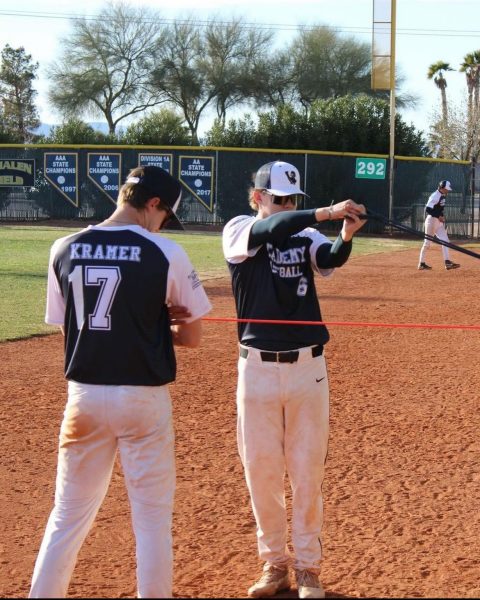Evolution through Distance Running
When the average human is told to run, a large groan of displeasure usually follows. However, the human race evolved in order to have a high capacity to run long distances in hot, arid conditions. Our efficient cooling system, powerful gluteus maximus muscles, short big toes, and bipedal stance are all a part of evolution’s goal to create the perfect long distance runner. According to Daniel E. Lieberman of Harvard University, human endurance running capabilities derive from a suite of anatomical, physiological and behavioral features, many of which are uniquely evolved in humans, and which suggest that endurance running played an important role in human evolutionary history. But what does all this mean? It means that every time students walk the mile in physical education or one looks at a marathon runner in disbelief, our species grows farther away from our evolutionary purpose: to outlast our competition, whether it be prey or predator, due to our natural ability to run on long intervals.
The first piece of evidence that suggests humans can outrun almost any animal is our unique cooling system. The fact that humans have evaporative cooling system and limited fur helps to regulate our body at the high temperatures that result from running. Because we cool by sweating rather than panting, we can stay cool at speeds and distances that would overheat other animals. According to two scientists, on a hot day, a human could even outrun a horse in a 26.2-mile marathon. So when our relatives were hunting and gathering food in scorching, ancient Africa, a bird falling from the sky in the distance or a mammal trying to get away could have easily been overtaken by distance runners due to our numerous sweat glands and minimal body hair.
More evidence aligning our ancestors to an endurance running background is the fact that humans have a short, straight big toe. If our toes were even 20 percent longer then it would more than double the mechanical work of the foot. Another feature humans have that our closest relatives, apes and gorillas, do not is a straight, aligned big toe. The fact that our big toes align forward and not to the side allows our feet to push off the ground more forcefully and efficiently. The combination of a narrow, highly mobile waist and a midsection that allows humans to swing our arms prevents us from zigzagging along the trail. Finally, our gluteus maximus, the largest muscle on our body, is only active when we are running. The most powerful muscle in our body lays largely inactive for most of daily activities, such as walking and sitting, yet is in full force when humans decide to run and. Moreover, a human’s muscles can store up to twenty miles of glycogen needed to provide energy.
When you add up all of the attributions human biomechanics have that are in favor of endurance running, one cannot deny that humans have evolved in order to be superior long distance runners. It is not the by-product of the ability to walk bi-pedally, but rather deep evolutionary roots. Even though humans no longer have the need to run, we still carry the capabilities to run marathons and long distances as a modern manifestation of a uniquely human trait that makes us the way we are.

I am currently a Senior at Air Academy High School and Senior Sports Editor of the Jetsream Journal. I kinda like math and sometimes I run, a lot. I eat...














Audrey • Nov 1, 2015 at 7:50 pm
Wow that is crazy how perfectly our bodies are made to run, though I still can’t find the strength to make myself do it.